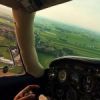Poll on individual CHTs in carb'd planes
If you have a CARB'D O-360 with a DOGHOUSE and an ENGINE MONITOR...
13 members have voted
-
1. What is usually your hottest CHT in normal cruise fight after leaning? Please use correction factor if you have a piggyback or spark plug gasket probe on the cylinder with the factory probe.
-
Cylinder #10
-
Cylinder #26
-
Cylinder #34
-
Cylinder #42
-
Not sure, or it's too variable from flight to flight2
-
-
2. Is your hottest cylinder in normal cruise flight also your leanest cylinder?
-
Yes3
-
No4
-
Not sure, or it's too variable from flight to flight6
-
-
Members Online
- Rmnpilot
- Ed de C.
- hubcap
- Meshach
- gabez
- Jay Bird
- TCC
- gwav8or
- Parker_Woodruff
- rahill
- Sense
- Bolter
- KASE
- PT20J
- 1980Mooney
- skydvrboy
- MB65E
- Aaviationist
- Cruiser
- Igor_U
- tony
- nyav8or
- 67 m20F chump
- slowflyin
- Stealth Mooney
- Rmfriday
- LANCECASPER
- natdm
- takair
- 201Mooniac
- RangerM20
- Marc_B
- Mikey30V
- Ragsf15e
- Teddsgotwings
- Paul Thomas
- Jason 1996 MSE


Recommended Posts
Join the conversation
You can post now and register later. If you have an account, sign in now to post with your account.